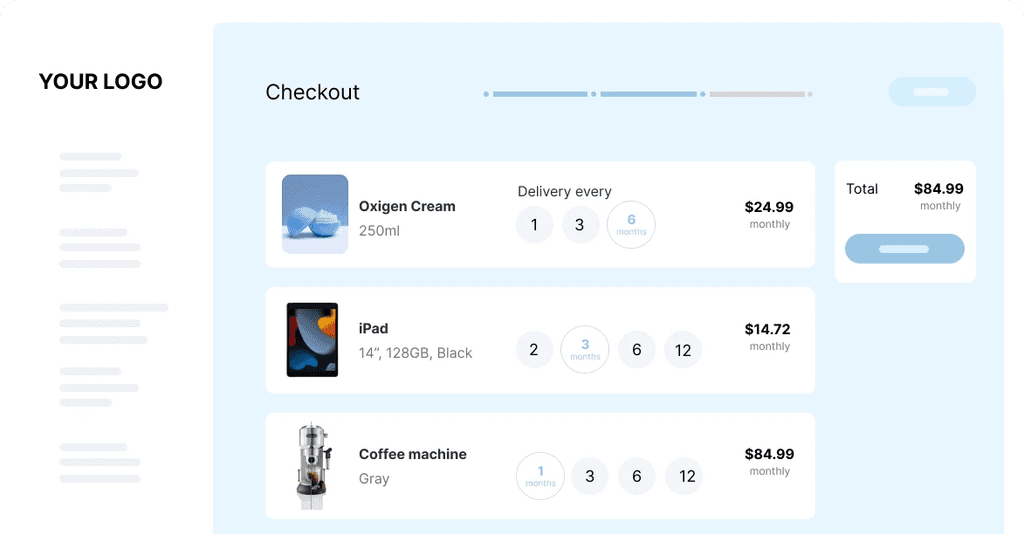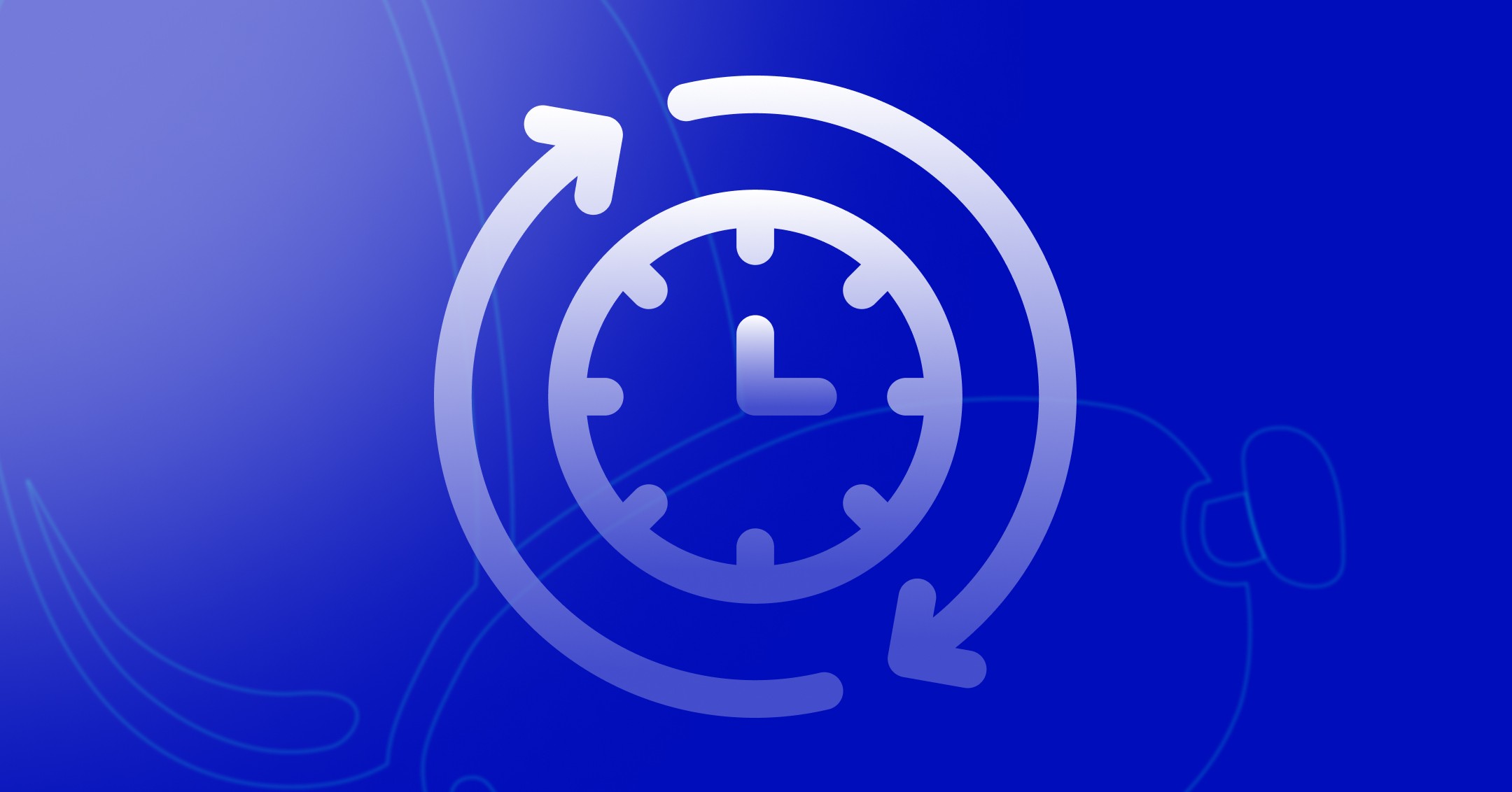Tiered Subscription Model: Strategies for Revenue Growth
Patricia Bernal

Feb 28, 2025
Demystifying the Tiered Subscription Model

The tiered subscription model offers customers different packages with varying features and price points, allowing them to choose options that best match their needs and budget. This approach stands in contrast to the flat-rate model, where every subscriber pays the same price for identical features. Understanding how tiered pricing works is essential for businesses looking to maximize both revenue and customer satisfaction.
Why Tiered Subscriptions Work
Tiered subscriptions succeed by catering to diverse customer segments. A basic tier might appeal to budget-conscious users who need only essential features, while premium tiers attract power users willing to pay more for advanced capabilities. This strategy helps businesses capture a wider market share and boost overall revenue.
The model also creates natural upselling opportunities as customers can easily upgrade when their needs evolve. Studies show that businesses are 50% more likely to attract and retain subscribers with a tiered model compared to flat-rate pricing. Netflix demonstrated this effectiveness when it introduced tiered pricing in 2014, helping the company achieve a remarkable 93% retention rate by 2020—among the highest in the streaming industry.
By offering multiple pricing options, companies can serve customers across different spending levels while encouraging them to consider higher-value plans with greater functionality. Want to learn more? Check out The Dynamics of the Tiered Subscription Model Explained.
Key Elements of a Successful Tiered Model
Creating an effective tiered subscription model requires careful attention to several critical components. Each element plays an important role in making sure your pricing structure delivers value to customers while driving business growth.
Clearly Defined Value Proposition: Each tier should feature a distinct value proposition that clearly communicates its benefits and target audience.
Strategic Feature Differentiation: Features must be thoughtfully distributed across tiers to create a logical progression of value.
Compelling Pricing Strategy: Prices should reflect the perceived value of each tier while remaining competitive in the market.
Flexible Upgrade and Downgrade Options: Making it easy for customers to switch between tiers improves satisfaction and reduces cancellations.
When you understand and implement these fundamental components, you can design a tiered subscription model that drives steady revenue growth while building strong customer relationships. This approach positions your business for long-term success in competitive markets.
Strategic Advantages That Drive Real Business Growth

The tiered subscription model offers more than just customer choices—it provides concrete strategic benefits that power sustainable growth. This approach lets businesses connect with customers across various needs and budget levels, opening up significant new revenue streams. Let's explore how these subscription tiers boost customer acquisition, strengthen retention, and ultimately increase your bottom line.
Maximizing Customer Acquisition Through Segmentation
One major advantage of tiered subscriptions is effective market segmentation. By creating distinct price and feature tiers, you can attract customers with different willingness-to-pay levels. Lower-priced options serve as entry points for budget-conscious customers, while premium tiers appeal to those seeking advanced features and services.
This approach helps you capture a much broader market share than a single flat-rate offering ever could. The wider reach directly translates to higher acquisition rates and builds a solid foundation for future expansion.
Enhancing Customer Retention and Reducing Churn
Tiered pricing significantly improves customer loyalty. When customers can select a plan that perfectly matches their current needs and budget, they're more satisfied and less likely to cancel. As their requirements evolve, they can simply upgrade to a higher tier without the hassle of switching providers.
This built-in flexibility fosters long-term relationships and reduces customer turnover. The numbers back this up: research shows that SaaS companies using tiered pricing experience an average churn rate of just 5% compared to 8% for those using flat-rate pricing. Learn more about tiered pricing and customer retention.
Let's look at how these two approaches compare across key metrics:
Metric | Tiered Subscription Model | Flat-Rate Pricing |
|---|---|---|
Customer Acquisition | Higher due to multiple entry points | Limited by single price point |
Average Churn Rate | 5% | 8% |
Customer Lifetime Value | Higher due to upgrade paths | Fixed unless prices increase |
Market Reach | Broader demographic appeal | Narrower target audience |
Price Flexibility | Multiple options for different budgets | One-size-fits-all approach |
Upsell Opportunities | Built into the model structure | Limited or non-existent |
Customer Satisfaction | Higher due to choice flexibility | Lower due to limited options |
As you can see from the table above, tiered subscription models consistently outperform flat-rate pricing across essential business growth metrics.
Driving Profitability Through Strategic Tier Design
Smart tier design plays a critical role in protecting your profit margins while boosting perceived value. By thoughtfully structuring tiers with distinct features and pricing, you can maximize revenue from each customer segment.
Premium tiers with advanced functionalities and exclusive benefits command higher prices, contributing substantially to overall profitability. At the same time, entry-level tiers maintain accessibility for budget-conscious customers, creating a diverse and stable revenue stream. This balanced approach supports sustainable growth without sacrificing profit potential.
Experimenting with Pricing for Optimal Results
Perhaps most importantly, tiered models give you the freedom to experiment with pricing structures without disrupting your existing customer base. You can A/B test different price points and feature combinations within specific tiers to find what maximizes conversions and revenue.
This data-driven approach allows for continuous improvement based on real customer behavior. By actively analyzing how customers respond to different offers and adjusting accordingly, you can fine-tune your subscription model to deliver maximum results and drive ongoing business growth.
Crafting Tiers That Convert: The Psychology of Value
Creating compelling subscription tiers goes far beyond simply matching features with price points. It demands a genuine understanding of how customers perceive value at different price levels. When you thoughtfully structure your tiered subscription model, you can effectively connect with different customer segments and naturally encourage upgrades. This isn't about manipulation—it's about creating options that genuinely align with what your customers need and want.
The Power of Three: Why Most Businesses Choose This Magic Number
Studies consistently show that three tiers works best for most subscription businesses. This provides the perfect middle ground between too few choices and overwhelming complexity. Three distinct options creates a natural decision framework for customers. You can offer an entry-level option for newcomers, a mid-tier package with attractive additional features, and a premium tier for power users. This structure creates a clear progression path that subscribers can follow as their needs and usage evolve.
Naming Your Tiers: Conveying Value Through Language
The names you choose for your tiers do far more than just label them—they communicate value. Rather than settling for generic terms like "Basic," "Standard," and "Premium," consider descriptive names that speak directly to your audience's goals. Names like "Starter," "Growth," and "Scale" instantly communicate the purpose and benefits of each tier, making the choice more intuitive for potential subscribers.
Feature Allocation: Creating Clear Upgrade Paths
How you distribute features across tiers can significantly impact conversion rates. Each tier should offer a distinct package that clearly justifies its price point. This doesn't mean holding back essential features from lower tiers—instead, it's about thoughtfully distributing advanced functions and exclusive benefits to create a natural value ladder. When implemented properly, your tiered model should make the upgrade decision obvious as customers' needs grow. Regular tracking of metrics like MRR (Monthly Recurring Revenue), churn rate, and CLTV allows for data-driven adjustments to your model. Find more detailed statistics here.
Leveraging Psychology for Higher Conversions
Smart subscription businesses apply psychological principles to boost their tiered pricing performance. Exclusivity is a powerful motivator—offering premium features only in higher tiers creates desire and perceived value. Similarly, status plays an important role. Names like "Pro" or "Elite" appeal to customers who appreciate recognition and want to identify with a certain level of achievement. You might be interested in: How to master subscription pricing strategies.
Avoiding Common Tiering Pitfalls
Despite its advantages, the tiered subscription model comes with potential challenges to navigate. Feature bloat happens when tiers become overloaded with too many options, making it difficult for customers to see clear value differences. Another common issue is insufficient differentiation—when tiers are too similar, customers struggle to determine which option best suits their needs. By understanding these pitfalls and applying the strategies we've discussed, you can build a tiered subscription model that genuinely drives conversions.
Success Stories: Tiered Models That Transformed Businesses

Looking at real-world examples shows just how powerful tiered subscription models can be for business growth. Companies of all sizes have used these flexible pricing structures to overcome challenges and create remarkable success stories. Let's explore how strategic tier implementation has helped businesses boost revenue and keep customers coming back for more.
From Streaming Giants to Flourishing Startups
Netflix provides a perfect example of tiered pricing done right. They evolved from a single-price model to their now-familiar three-tier structure—Basic, Standard, and Premium. This smart change allowed them to reach more customers while increasing their average revenue per user. Plus, they made upgrading easy when customers' needs changed.
But you don't need to be a huge corporation to benefit from tiered pricing. Small businesses have seen amazing results too. Take the case of a flower subscription service that struggled to balance affordable options with premium offerings. By creating distinct tiers, they could offer both budget-friendly bouquets and luxury arrangements, significantly expanding their customer base. Learn more in our article about How Florencia Flores scaled their flower subscription service.
Key Strategies for Tiered Model Success
When we look at businesses that succeed with tiered subscriptions, some common patterns emerge. First, they truly understand what their customers value. This deep knowledge helps them create tiers that genuinely appeal to different customer segments. Each tier offers distinct features that make their pricing seem fair and attractive.
Second, they communicate the value of each tier clearly. By explaining the benefits without overwhelming potential subscribers, they make decision-making easier and encourage upgrades. This transparency builds trust and helps customers see the value in each option.
Finally, successful businesses constantly fine-tune their approach. They analyze customer behavior, track important metrics, and adjust their tier structures based on real feedback. This ongoing optimization keeps their model relevant as market trends and customer preferences evolve.
Let's take a closer look at how tiered pricing strategies vary across different industries:
Industry-Specific Tiered Pricing Strategies
Below is a comparison of how different industries approach tiered subscriptions, highlighting their structures, value metrics, and retention results.
Industry | Common Tier Structure | Value Metrics | Customer Retention Rate |
|---|---|---|---|
SaaS | Free, Basic, Pro, Enterprise | Features, users, storage | 70-85% |
Streaming | Basic (limited), Standard, Premium | Resolution, screens, downloads | 65-75% |
Fitness | Digital only, Hybrid, Premium | Class access, personal training, equipment | 55-65% |
E-commerce | Free, Monthly, Annual (discounted) | Free shipping, early access, exclusive products | 60-70% |
Publishing | Free (limited), Standard, Premium | Ad-free, exclusive content, early access | 50-60% |
As you can see, each industry tailors its approach to what customers value most, whether that's content quality, access options, or exclusive features. The retention rates show that when done right, tiered models significantly boost customer loyalty.
Building Your Own Tiered Subscription Success
These examples show how a well-designed tiered subscription model can supercharge business growth. By learning from these success stories and applying key insights to your own business, you can create a subscription structure that attracts new customers, keeps existing ones, and maximizes your revenue.
This approach doesn't just help your bottom line—it makes your customers happier by giving them options that fit their specific needs and budgets. Remember that the real secret to success with tiered subscriptions lies in understanding your customers, creating clear value differences between tiers, and continuously improving your model based on actual data and feedback.
Navigating Common Pitfalls: From Problems to Solutions
Even the best tiered subscription models can run into challenges. Understanding potential problems and their solutions is key to long-term success. Let's explore the most common issues and practical ways to overcome them.
Preventing Tier Cannibalization
Tier cannibalization happens when lower-priced tiers attract customers who would otherwise choose premium options. This reduces revenue and weakens the value of higher tiers.
The solution? Create clear feature differentiation between tiers. Make sure premium tiers offer unique benefits that justify their higher price. For example, a software company might reserve API access for its highest tier, making it essential for power users while still providing good functionality in lower tiers.
Addressing Price Sensitivity
Customers naturally pay attention to price, which can challenge tiered pricing strategies. The key is showing the value of each tier without devaluing your overall offerings.
Highlight the specific benefits each tier provides and focus on the problems they solve for different customer segments. Consider offering annual billing discounts for higher tiers to encourage customers to choose premium options while addressing their budget concerns.
Eliminating Tier Confusion
When customers can't easily tell the difference between tiers, confusion follows. Combat this by using clear, descriptive tier names like "Starter," "Growth," and "Scale" that reflect what each option offers. Here is a template example-

Adding a comparison table that outlines features across tiers helps customers make informed decisions. This visual clarity makes the selection process easier, improving customer satisfaction and reducing decision fatigue. Be clear with what each tier offers and whether it is made for a specific type of consumer, business, and so on.
Testing and Gathering Feedback
Before fully launching your pricing structure, testing is essential. Try A/B testing different price points and feature combinations to find what works best for your audience.
Collect feedback through surveys and user interviews. This direct input provides valuable insights into what customers think and prefer, helping you fine-tune your tiered model. You might be interested in: How to master increasing customer retention.
Transitioning Existing Customers
Introducing a new tier structure to current customers requires careful planning to prevent cancellations. Offer incentives like exclusive discounts or early access to new features to encourage moving to new tiers.
Be transparent about the changes and explain how they benefit customers. Provide personalized recommendations based on current usage patterns to smooth the transition. For instance, if a customer already uses a feature only available in a higher tier, offer them a special introductory rate for that tier.
By understanding and addressing these common pitfalls, you can ensure your tiered subscription model remains effective and drives sustainable growth. Regularly refining your approach based on data and customer feedback will help your business adapt to changing market needs and maximize revenue potential.
Evolving Your Model: From Implementation to Optimization

Launching a tiered subscription model marks an important milestone, but it's really just the beginning of your journey. The real strength of this approach comes from its adaptability and your ability to refine it over time. Success depends on consistently analyzing how customers interact with your tiers and adjusting to market changes. Let's explore practical ways to keep your subscription model performing at its best.
Key Metrics for Continuous Improvement
To optimize your subscription tiers, you need to track the right data. Start by monitoring tier-specific conversion rates to see which packages naturally appeal to your audience. This simple analysis quickly reveals your stars and underperformers.
Pay close attention to upgrade and downgrade patterns between tiers. These movements tell you volumes about how customers perceive value at different price points.
Don't overlook churn signals within individual tiers. When customers consistently leave a particular tier, it often indicates a mismatch between price and perceived value that needs addressing.
A/B Testing for Subscription Businesses
A/B testing offers a straightforward way to fine-tune your subscription model through direct comparison. Try different approaches with pricing, feature groupings, or even the names of your tiers.
For instance, you might test a slightly higher price on your premium tier to gauge impact on conversions. Or you could move a popular feature into a lower tier to see if it drives upgrades. This methodical testing process helps you find the sweet spot where features, pricing, and perceived value align perfectly.
Managing Price Increases Effectively
Price adjustments are sometimes necessary but require careful handling to prevent cancellations. When raising prices, be transparent about the changes and clearly explain what new value customers will receive in return.
Consider offering existing loyal subscribers a special grandfathered rate for a limited period. This approach softens the impact of increases while making long-term customers feel valued. Remember that how you communicate price changes matters almost as much as the changes themselves.
Introducing New Tiers: When and How
As your business grows, you may spot opportunities to add new subscription tiers that address emerging customer needs or market shifts. Before creating new options, thoroughly analyze your customer base to identify any underserved segments.
Research competitor offerings to find unique positioning opportunities for your new tier. When you launch it, make sure it has a distinct value proposition that won't cannibalize your existing tiers. Each tier should have clear benefits that justify its specific price point.
Systematic Review and Adaptation
Set up a regular schedule—quarterly or annually—to comprehensively assess your subscription model's performance. During these reviews, analyze your key metrics, review customer feedback, and stay informed about market trends.
This disciplined approach to continuous improvement ensures your tiered subscription model stays relevant as customer expectations and competitive pressures evolve. By taking a proactive stance, you'll keep your subscription business thriving over the long term.
Conclusion
Adopting a tiered subscription model is a powerful strategy for driving revenue growth while meeting the diverse needs of your customer base. By offering multiple pricing levels, businesses can appeal to different segments, boost customer retention, and increase lifetime value. Whether you’re a SaaS company or an eCommerce brand, a well-executed subscription pricing strategy allows for scalable growth and long-term customer engagement. As competition rises, fine-tuning your subscription tiers can set your business apart and ensure sustainable success.
Looking to simplify your subscription management and boost revenue? Sharpei provides flexible payment solutions that help you implement and refine tiered subscriptions effectively. Visit their website to learn how they can help transform your subscription business.
Related posts
Ready To Join The Circular Movement?
United for a smarter shopping experience and a better planet












